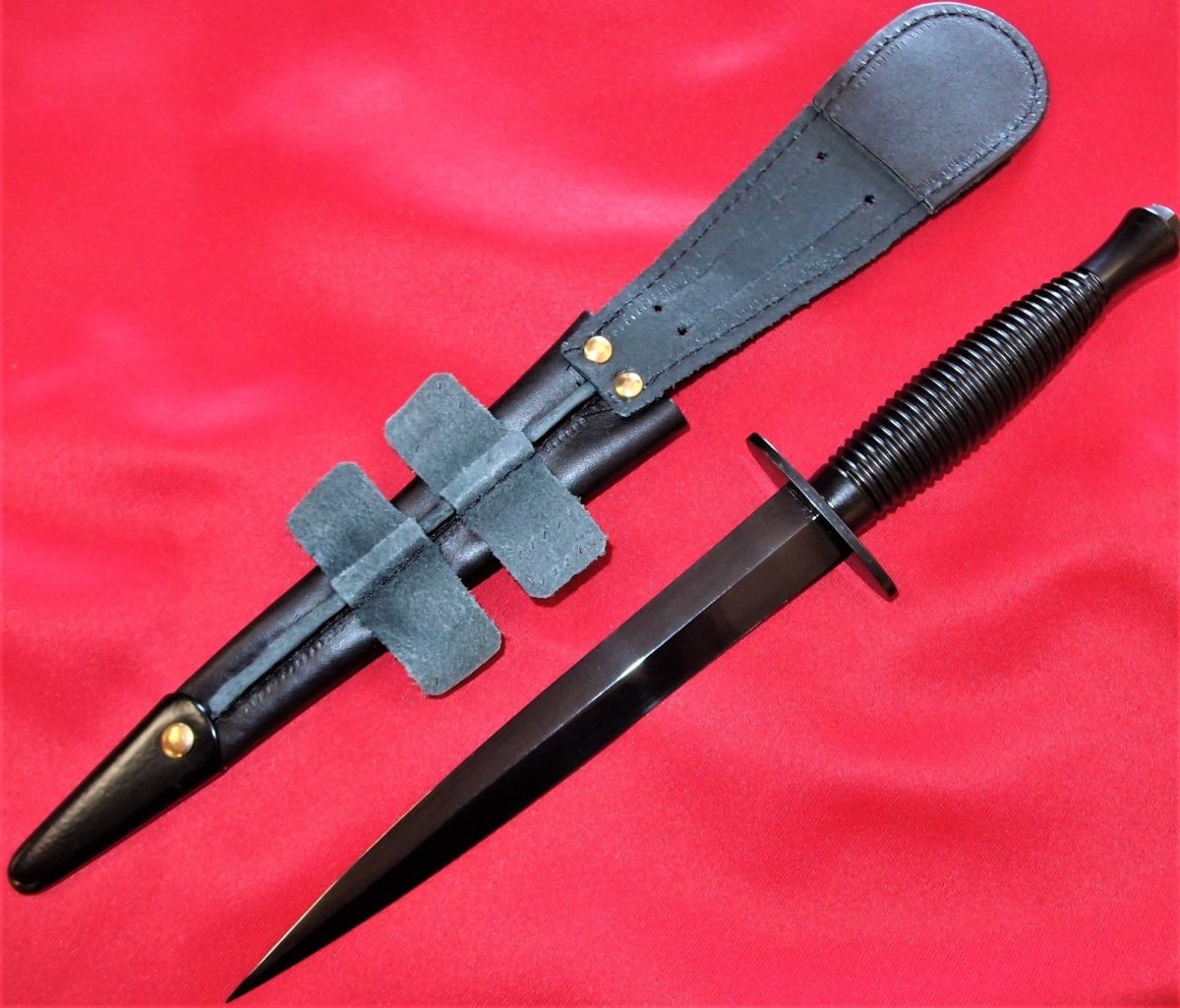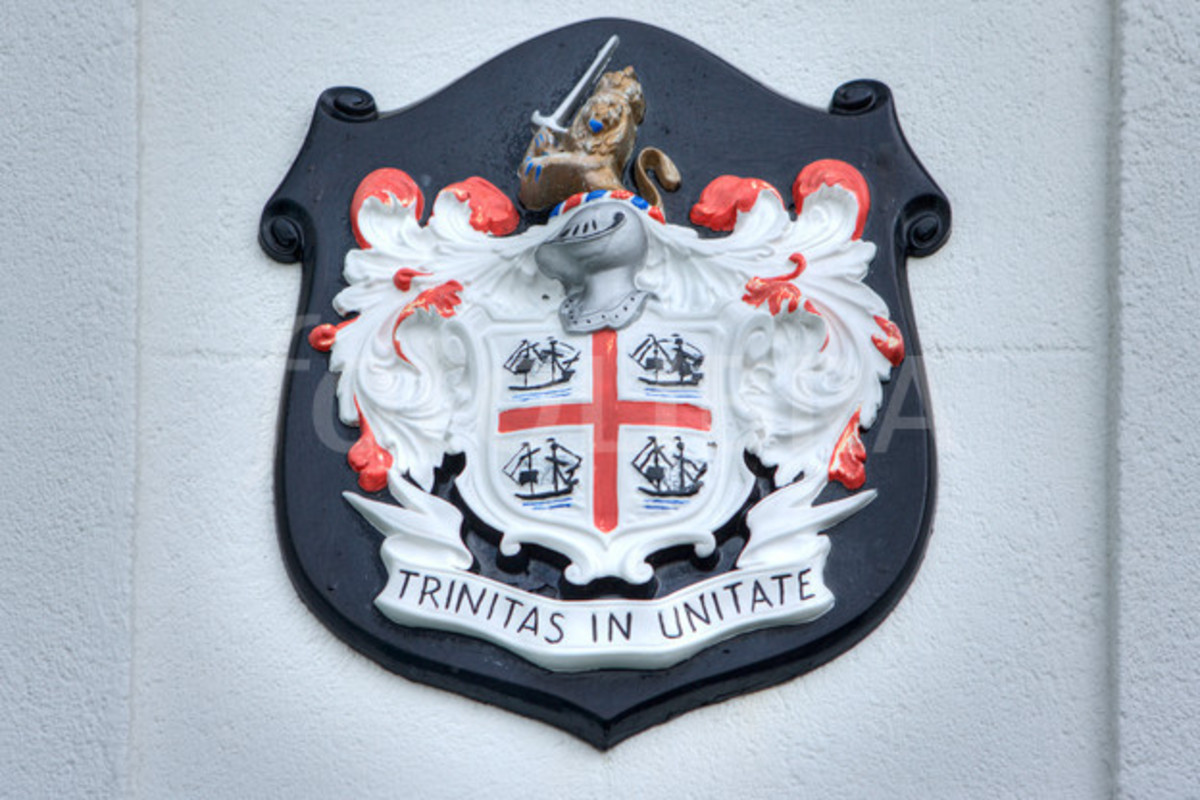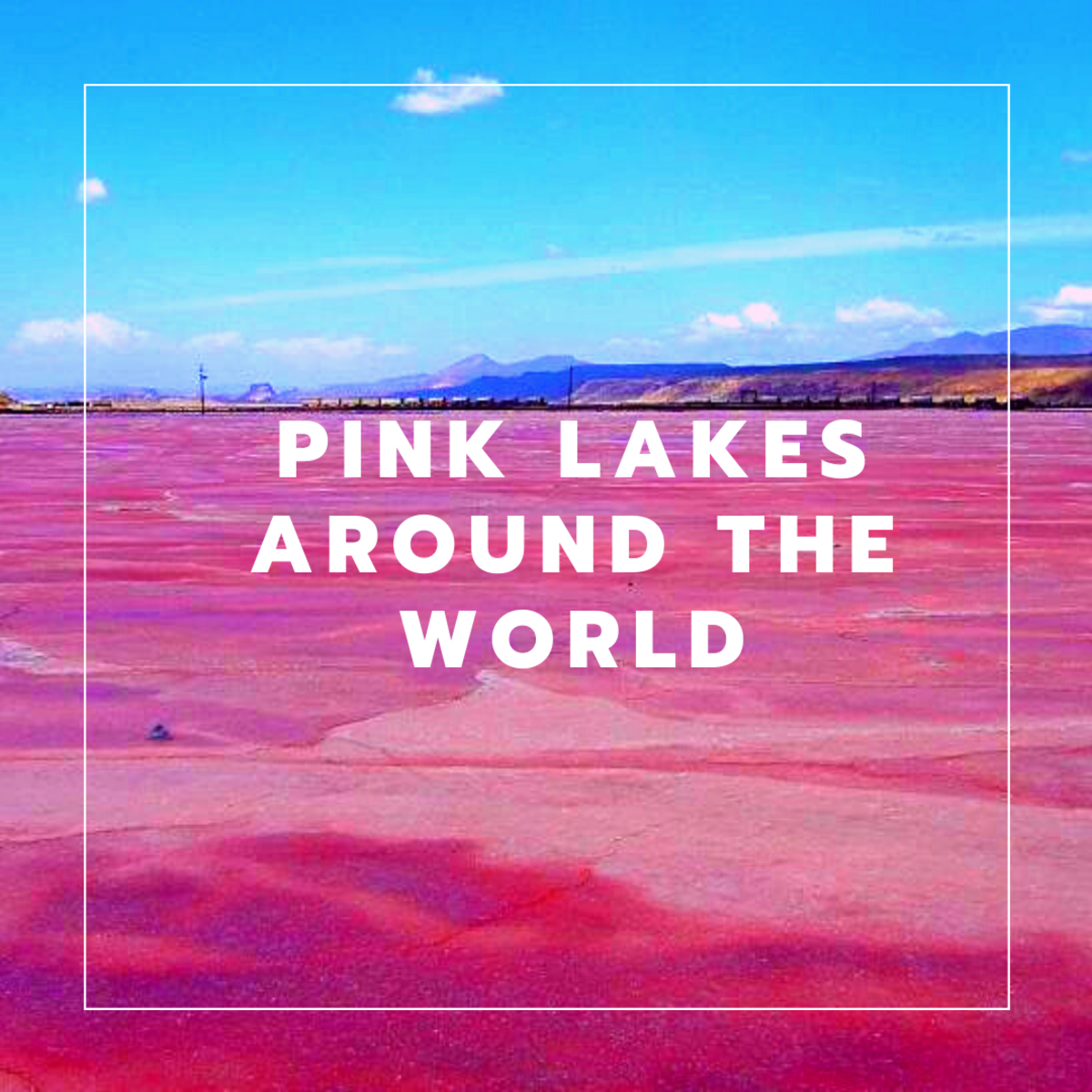Oman: Curved Daggers, Sinbad the Sailor, & Beef and Date Stew
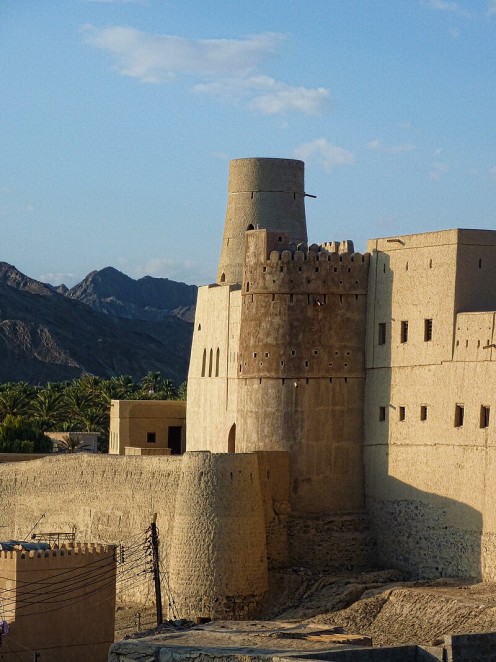
Want to know more about Oman? Are you a lover of travel, geography teacher, homeschooling or involved parent, student, or life-long learner? In an effort to make world geography more meaningful and memorable, I've compiled all you will need to locate Oman on a map, cook a Omani meal, watch YouTube clips on Oman, color the flag, create an Omani-inspired craft, read a great book about Oman, and more! This is part of a series of lessons I did with my family while studying various countries from around the world. You can see them all at Around the World in 26 Letters .
Have you been to Oman?
Where is Oman?
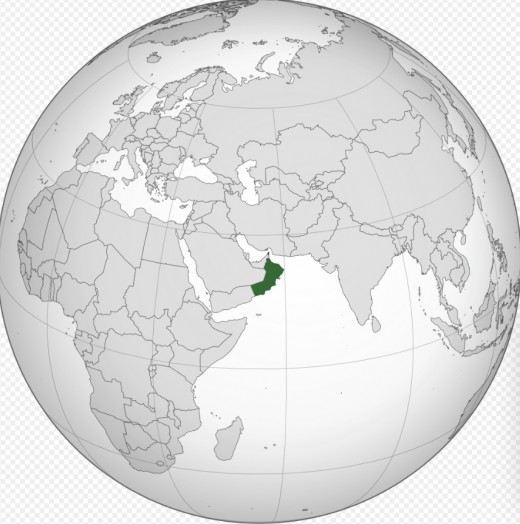
- Locate Oman on this map of Asia.
- Use this map of Oman to label the capitol, Muscat/Musqat. Mark other relevant features (rivers, mountains, famous locations, etc.) if desired.
- If you'd like to spend a bit more time researching the country, you can add the language, currency, type of government, religion, and/or famous landmarks. Write them on the back of the map. You can easily find all this information at http://en.wikipedia.org/wiki/Oman.
Top Five Fun Facts About Oman: Fun Fact #1: Frankincense
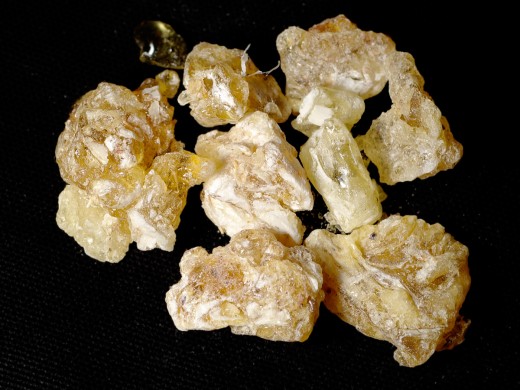
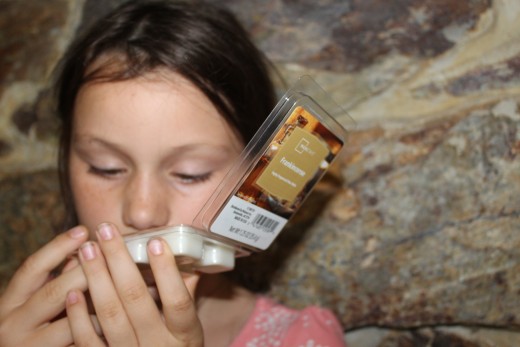
1. Oman used to be one of the richest countries in the world, with the wealth mainly originating from the incense trade. It is said that Ubar, the legendary city believed to be in control of Frankincense trade, got buried under the desert because its wealth led people astray from their religion.
Fun Fact #2: Arabian Horses
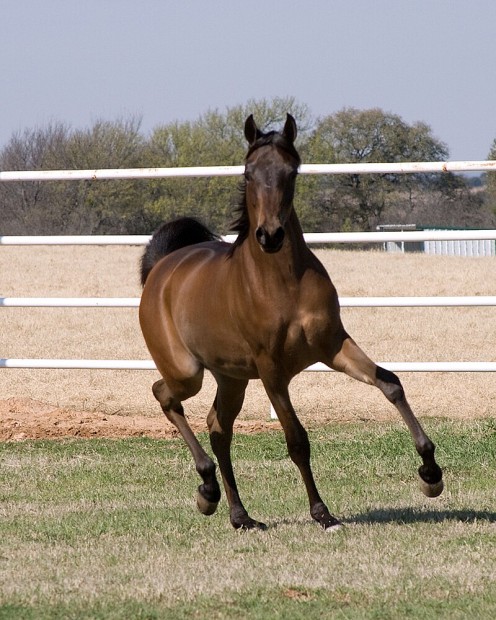
2. Oman is traditionally known for breeding Arab horses, one of the oldest modern breeds in the world. There is archaeological evidence of horses resembling modern Arabians in Oman dating back 3,500 years. Arabian Horses were the great passion of Sultan Qaboos ibn Said, the former head of state of Oman. He owned nearly 1000 Arabian Thoroughbreds, making the world’s largest mounted army, his “Royal Cavalry.”
Fun Fact #3: Shipbuilding
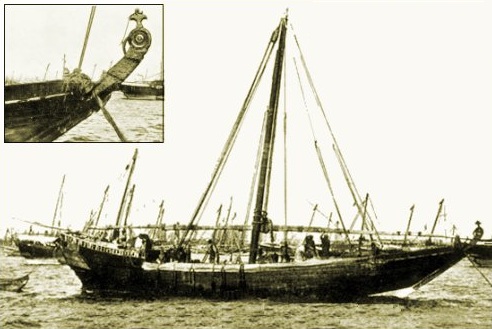
3. Oman has a long tradition of shipbuilding, as maritime travel played a major role in the Omanis' ability to stay in contact with the civilizations of the ancient world. Oman commanded fleets of ocean-going trading ships that explored far distant shores and interacted with the great civilizations including the Sumerians, Babylonians, Egyptians, Romans and others. Sur was one of the most famous shipbuilding cities of the Indian Ocean, and ships continue to be built in the traditional manner in Sur to this day. An al Ghanja ship (see photo above) takes one whole year to build.
Fun Fact #4: Long-Ruling Monarchies & No Tourists
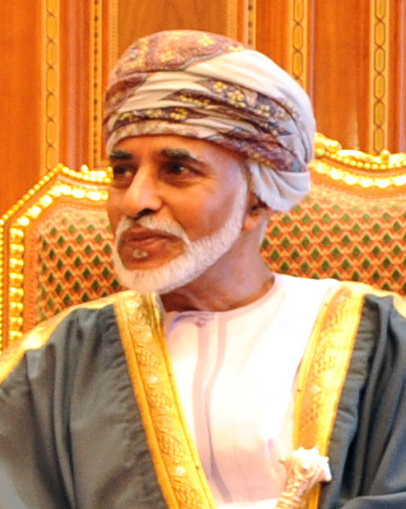
4. Oman is an absolute Monarchy (Sultanate). The Omani Al Said family ruled Oman from 1794 until 1970. They’re one of the longest running royal families in the world. Afterwards, Sultan Qaboos Bin took over. He was the longest-serving ruler in the Middle East at the time of his death in 2020, ruling for 50 years. He encouraged the modernization of Oman. When Sultan Qaboos ascended to power in 1970, Oman was virtually closed to international visitors. The few visitors who did arrive were confined mainly to Muscat, the capitol. The first hotels in Oman were built in 1990. Over the last few decades tourism has become a rapidly growing industry in the nation.
Since Sultan Qaboos Bin did not have a son, his predecessor was his cousin, Haitham bin Tariq
Fun Fact #5: Endangered Animals
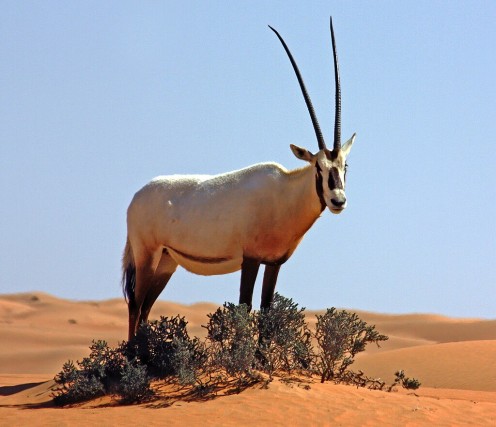
5. Some of the endangered species found in Oman include the Arabian leopard, Arabian oryx, mountain gazelle, goitered gazelle, Arabian tahr, green sea turtle, hawksbill turtle and olive ridley turtle. The Arabian Oryx Sanctuary is the first site ever to be deleted from UNESCO's World Heritage List, following the government's 2007 decision to reduce the site's area by 90% to clear the way for oil prospectors.
Arabian Leopard
Oryx (video takes place in UAE but about the same animal)
Oman's Flag
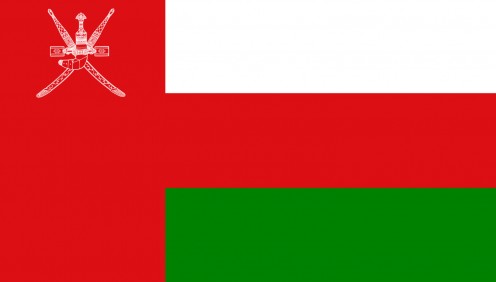
- Print and color the flag of Oman and learn the history and meaning of it from wikipedia.org.
- Oman's flag has consists of two horizontal stripes of upper white and lower green, separated by a red horizontal "T" shape in the center that contains the national emblem of Oman: a Khanjar and two swords.
Make a Khanjar
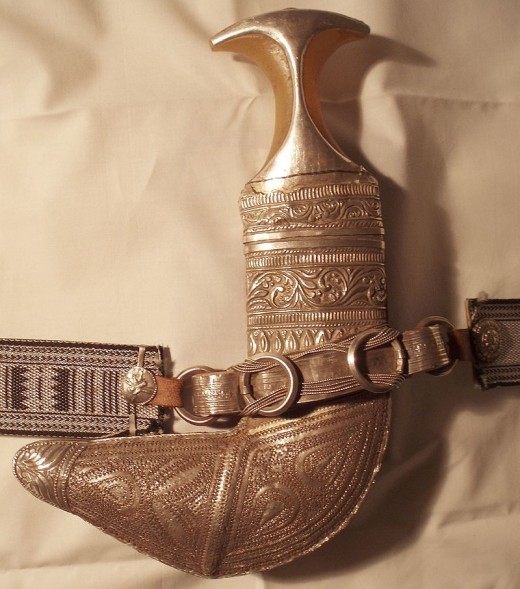
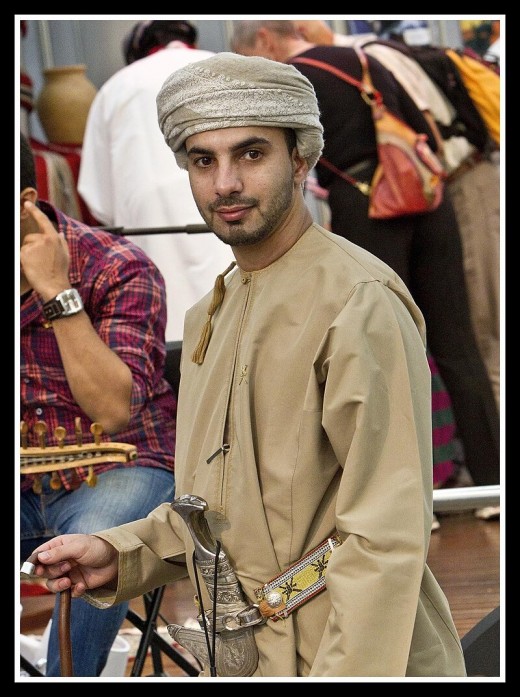
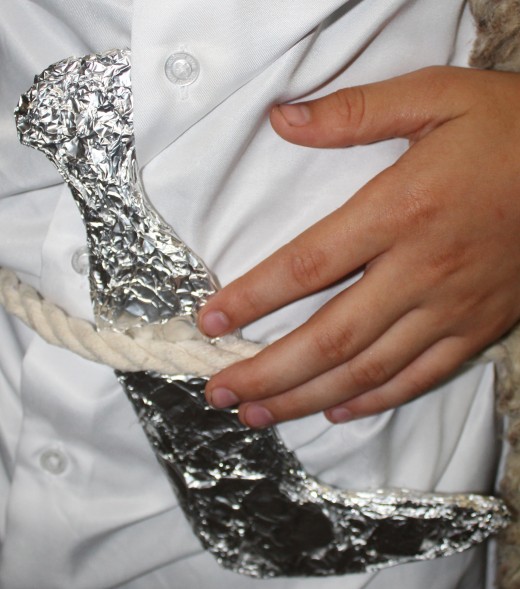

- In Oman men traditionally wear a curved dagger known as a "khanjar."
- Make a curved dagger out of cardboard. Either cover it with aluminum foil or paint it. Tape it to a belt.
- You can also try to wear a turban on your head. (Towels or large scarves work well as turbans.)
Omani Meal
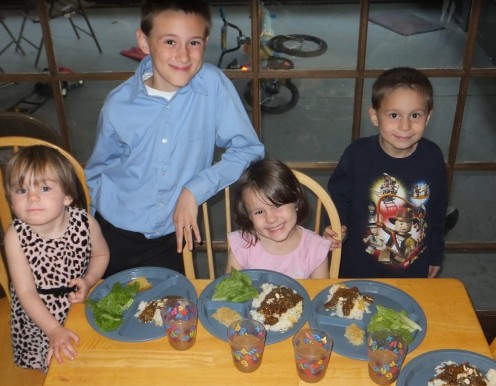
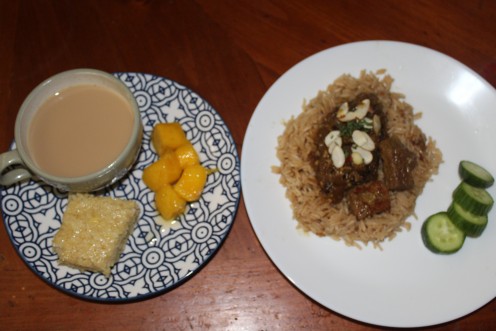
Prepare and serve:
- Beef and Date Stew
- White rice
- Cucumber slices (optional)
- Sweetened hot tea
- Coconut cake (or dates)
- Mango (optional)
Beef and Date Stew

- 1-2 teaspoons crushed red pepper
- 1 teaspoon ground turmeric
- 1 teaspoon ground ginger
- 1 teaspoon ground cinnamon
- 1/2 teaspoon salt
- 2 pounds of boneless beef (or lamb), cut into 1 to 1 1/2 inch pieces
- 2 tablespoons olive oil
- 2 large chopped onions
- 3 cloves minced garlic
- 2 (14.5 oz.) cans of beef broth
- 1 tablespoon cornstarch
- 2 tablespoons cold water
- 1 cup of chopped dates
- cooked white rice, (preferably basmati)
- 1/4 cup toasted slivered almonds (optional)
Instructions
- In a mixing bowl combine the spices and salt. Coat the meat with the seasoning mixture. In a large, heavy skillet heat oil over medium-high heat. Brown the meat, in the hot oil. Add onions and garlic, and stir to combine. Place the browned meat in a crock-pot. Pour in the broth. Cook on low 6-8 hours (or cook covered in the oven at 300F for 4-6 hours) or until the meat is tender. If needed, skim the fat from the surface of the juices. Stir cornstarch into the cold water; add to meat in the pan and stir. Add the dates, and stir to combine. Cover and simmer another 15 minutes or till mixture is slightly thickened and bubbly.
- Serve hot over white rice and garnish with toasted almonds.
- Serves 6-8 (This recipe came from www.desitwist.com.)
Juz Al-Hind Cake (Coconut Cake)
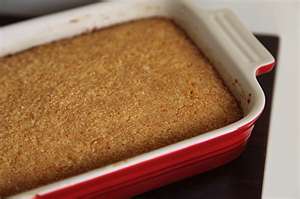
- CAKE:
- 1/2 cup of flour
- 1/2 cup of farina (Cream of Wheat)
- 1/3 cup of sugar
- 1 1/2 tablespoons of baking powder
- 1 cup shredded coconut
- 2 eggs
- 1 cup of milk
- 1 teaspoon vanilla or pineapple extract
- SYRUP:
- 3/4 cup of sugar
- 1 cup of water
Instructions
- Make the Syrup: Mix the 3/4 cup of sugar and 1 cup of water in a saucepan. Bring to a boil. Reduce heat to medium low and boil for 5 minutes. Set aside to cool.
- Prepare the cake: In a bowl mix the flour, farina, sugar, baking powder, and coconut. In another bowl, mix the eggs, milk, and vanilla. Add the wet mixture to the dry mixture, and stir until well mixed. Pour into a 8" x 11" lightly greased cake pan and bake at 350F until a toothpick or knife inserted near the center comes out clean, about 20-25 minutes. If the top is not already a golden brown, then broil the top for a minute or two to achieve this color. Remove from the oven. Over the hot cake, pour the cooled syrup. Let cool before serving. Serves 8 (This recipe came from www.desitwist.com.)
Omani Milk and Ginger (or Cardamon) Tea
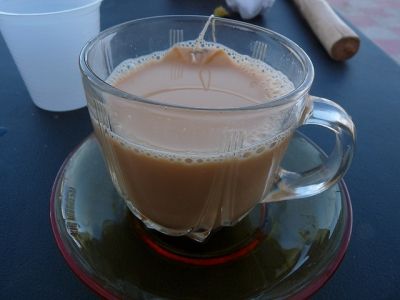
- 3 cups of water
- 3 Tablespoons sugar
- 2 tea bags or 2 tsp. of loose tea leaves
- 1 tablespoon fresh or ground ginger (or 1 tsp. ground cardamom)
- 1 can of evaporated milk
Instructions
- Boil the water, sugar and tea for 2-3 minutes. Add the evaporated milk and cardamom (optional). Bring again to a boil and then remove from heat. If using ginger, add it now.
- (This recipe came from www.desitwist.com.)
History of Oman
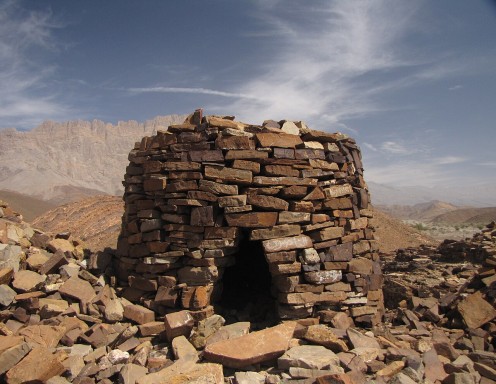
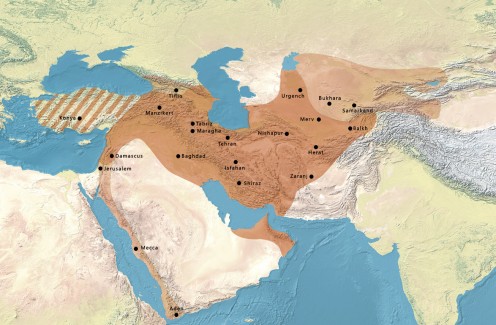
- Frankincense from Oman was traded starting around 1500 BC. The area was also known for its copper.
- During the 11th and 12th centuries, the Omani coast was ruled by the Seljuk Empire, which was started by Turks. (See the above map.)
- In 1154, the Nabhani dynasty came to power. During this time the mango tree was introduced to Oman.
- In 1507 the Portuguese captured the coastal city of Muscat and gradually extended their control around the area, providing an outpost to protect Portuguese trade in the Persian Gulf and the Indian Ocean. They ruled from 1507 to 1650.
- Oman is the oldest continuously independent state in the Arab world. In the 20th century, the sultanate came under British influence. The UK recognized Oman's geographical importance as a trading hub that secured British trading lanes in the Persian Gulf and Indian Ocean and protected London's interests in India.
- During World War II, the sultan of Oman declared war on Germany on September 10, 1939. During the war, Oman had a strategic role in the defense of the United Kingdom's trade routes. In 1943, the Royal Air Force established stations in Oman.
Dance the Al-Bar'ah, an Omani traditional dance
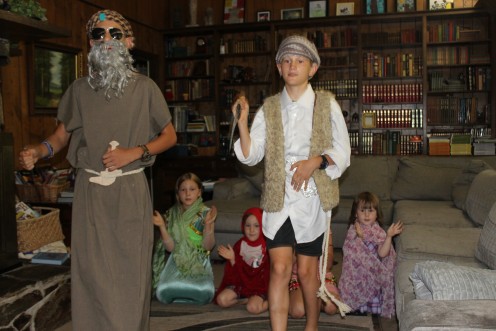
- Watch the below video to see and hear 15 musical instruments traditionally used in Arab countries including Oman.
- Dress in traditional Omani clothing (using what we have)
- Listen to Omani music and dance the Al-Bar'ah, an Omani traditional dance, using the below video
Instruments used in Oman (and other Arabic-speaking nations)
Al-Bar'ah, a traditional dance of Oman
Pray for the People of Oman
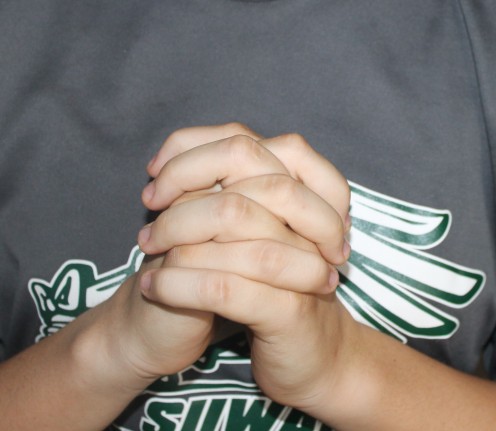
- To find out about the religious nature of Oman and specific ways you can pray for the country, go to operationworld.org and https://prayercast.com/prayer-topic/oman/ .
Visiting Oman on YouTube
Impressions of Oman
North Oman
Oman, Gem of the Arabian Peninsula
Traditional Omani Cooking
Oman is the only country that begins with the letter O.
Ready to visit other countries?

- Go to Around the World in 26 Letters to find links to all the countries we "visited." Each webpage features a menu, craft, books, video clips, worksheets, and more!
© 2011 Shannon


